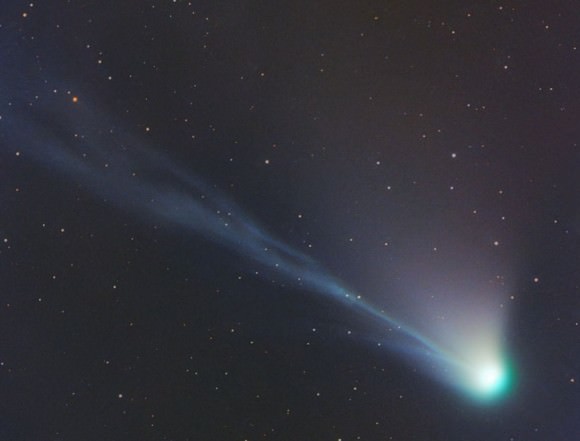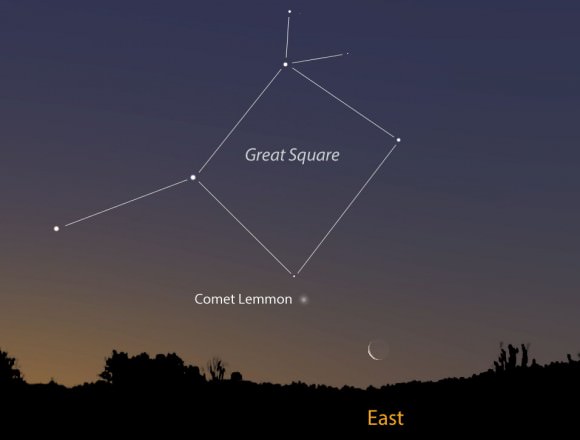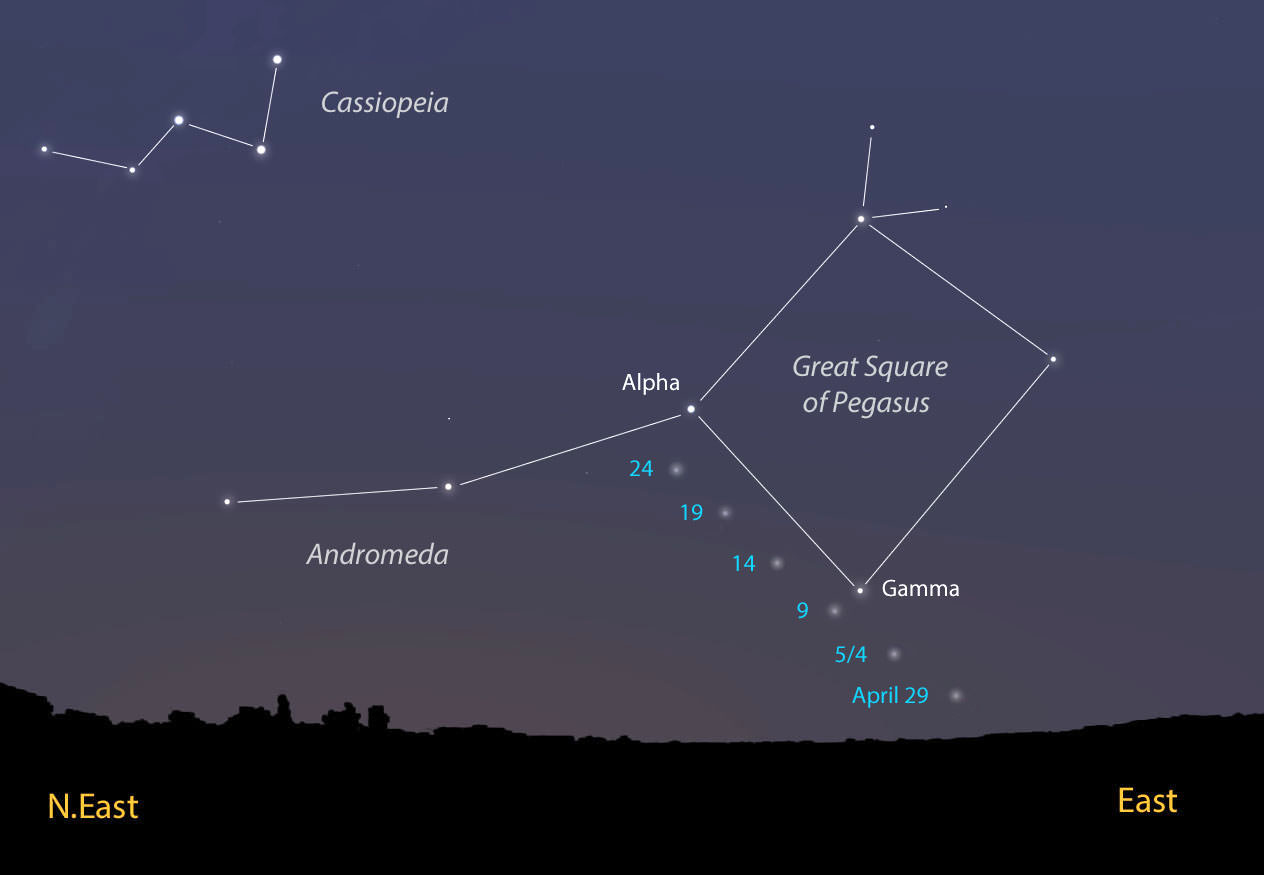If you honed your observing chops on Comet PANSTARRS this spring, consider dropping in on Comet Lemmon, now returning to the dawn sky. Southern hemisphere observers saw this comet at its brightest in March when it briefly became dimly visible with the naked eye. It’s now faded to around magnitude 6, the same as the faintest stars you can see under a rural sky.
Because it’s been “vacationing” in the southern constellations, northerners have had to wait until now to see it.

Like PANSTARRS, C/2012 F6 Lemmon is visible in modest-sized binoculars (7x35s, 10x50s) as a small, fuzzy ball of light with perhaps a faint tail. Watch for it to slowly track along the eastern side of the Great Square of Pegasus for the remainder of April and May. It competes with twilight low in the eastern sky this week but gradually becomes better placed for viewing as May unfolds. The best time to look is about an hour and a half before sunrise now and 2 hours before sunrise by mid-May.
The waning moon interferes some until around May 5. On the 6th, watch for the thin lunar crescent moon to pass 8 degrees below the comet. Around that time, we’ll finally get a good view of Lemmon in a dark, moonles sky just before the start of dawn.

Comet Lemmon will fade from naked eye limit to a dim binocular smudge of 7.5 magnitude by mid-May. If you have a telescope, look for a pair of tails – a short, diffuse one of dust particles and the straight, streak-like gas tail fluorescing in the sun’s ultraviolet light. The tails point approximately to the south-southwest. Catch this comet while you can!


I was fortunate enough to catch it from Chile in March. http://halfastro.wordpress.com/2013/03/16/comet-lemmon/
Now this is something worth getting up for! Thanks for the reminder Bob!
hey how high above the horizon will it be visible, in the northern hemis
depends partly on what part of the hemisphere, and depends on what time u go out to look. the earlier it will be lower. right now I bet it’s no higher than about 10 degrees high by the onset of twilight where I live. but I haven’t seen it yet (lots of clouds).
Can it be seen from New York..?
Yes it’s possible to see from NY, tho it will be a tricky object to find I bet.